Nestled in the western coast of India is the colourful, culturally rich and vibrant state of Gujarat. Ever since the birth of civilization, Gujarat ha
Last Updated on January 4, 2024 by Dev Blogger
Nestled in the western coast of India is the colourful, culturally rich and vibrant state of Gujarat. Ever since the birth of civilization, Gujarat has always been the centre of trade and culture. Today, it is one of the most prominent destinations in India for holy pilgrimages, Temple Darshans and experiencing some of the most iconic fairs and festivals. The folk dances of Gujarat are a way for the Gujarati to express their love, gratitude and happiness. Being a melting pot of cultures, there are different dance forms in different regions. Men and women dress up in their most colourful traditional clothes and dance to the music of local instruments creating a sublime environment of oneness.
Check out these folk dances of Gujarat
1. Garba Dance
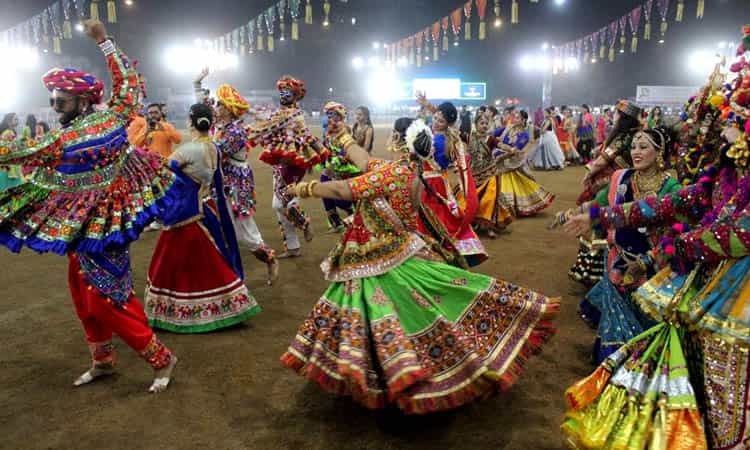
Garba is a term that is synonymous with Gujarat. Performed by the Gujarati women folk wearing the traditional brightly colored Chaniya Choli, this dance is performed during Navratri as a part of Shakti-Puja. The dance is performed to the tunes played by instruments like Damru, Tabla, Nagara, Murali, Shehnai etc. One of the features of the dance are the 3 claps, signifying the holy trinity of Brahma, Vishnu and Mahesh. The dance starts off with the lighting of a Diya placed inside an earthen pot with holes in it which symbolises the awakening of the goddess’s mother power. Performing Garba around this lighted pot with great energy, happiness, enthusiasm and a pure soul is believed to delight the mother goddess.
2. Raas Dance
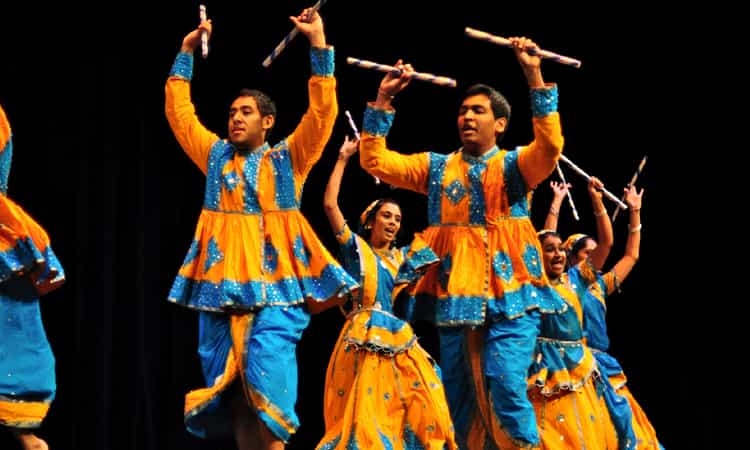
Raas draws its name from the Sanskrit term rasa which is an Indian aesthetic concept related to emotions and feelings. This socio-religious folk dance has its roots deeply immersed in ancient Gujarat when this dance was performed to thank and honour goddess Durga. Women and men participate in the dance holding two sticks in each hand while wearing traditional Gujarati Chaniya Choli that is also adorned with intricate mirror work. The dance is representative of a mock fight between Durga Maa and the demon Mahishasura with the Dandiya sticks being symbolic for swords. The dance is typically performed after the Garba performance.
3. Tippani Dance
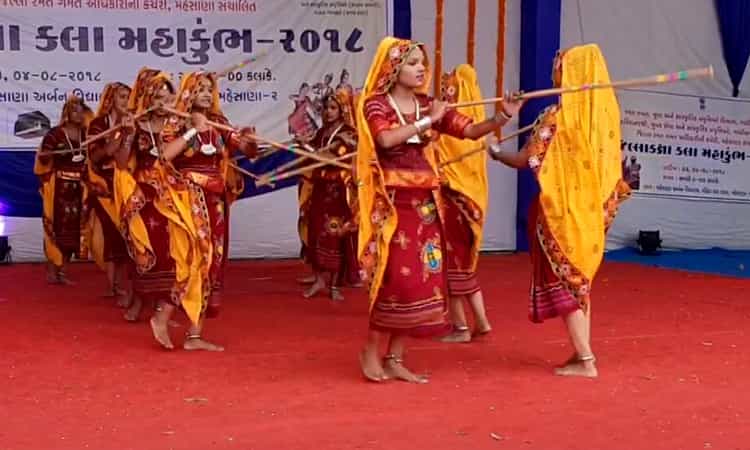
Originating from the Chorwad and Veraval areas of the holy Saurashtra region, Tippani is also locally known as Matla Dance or Tippani Nritya. Performed by the women population of Gujarat, this dance finds its origin among the women labourers who did this dance to escape the boredom of daily chores while their men are away. The main prop is a long stick which is 175 cm long, made out of iron or wood which is used to press lime during the construction process. Women dance along to some folk song and make the rather idle job of pressing limes over and over again, into rhythmically mesmerising steps. This tells us a lot about the spirit of the people of Gujarat.
4. Dangi Nritya Dance
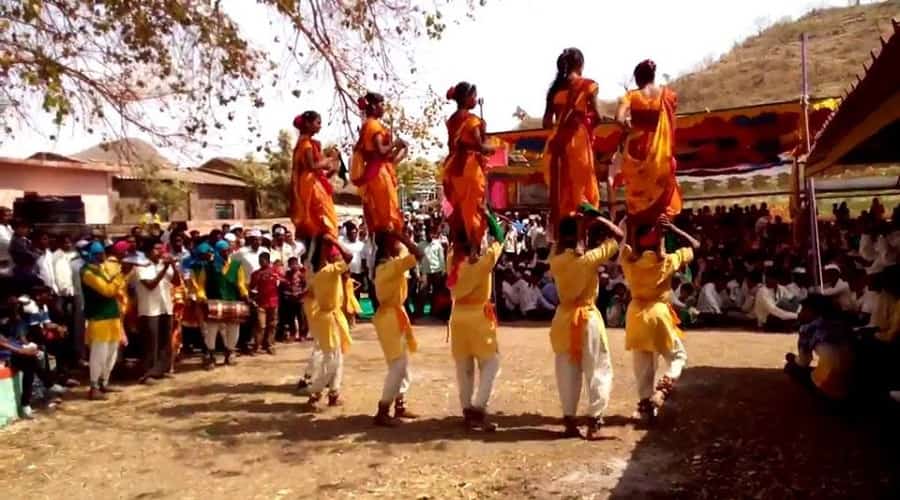
Native to the dang district of Gujarat, the Dang Nritya is a dance performed by the tribal community of Gujarat. This unique tribal dance also has Maharashtrian as well as Dravidian influences. The dance is performed by both men as well as women who join their hands together to create a long chain and dance in a serpentine type of motion. These dance movements are incredibly swift while creating interesting choreographic patterns. Each step in the dance is called Chala and there are about 27 different varieties of steps. Aerobics and forming a human pyramid are other crucial parts of Dangi Nritya. The entire dance is performed to the music of instruments like Dhol and Pawri. It is one of the most unique dance forms of Gujarat.
5. Hudo Dance
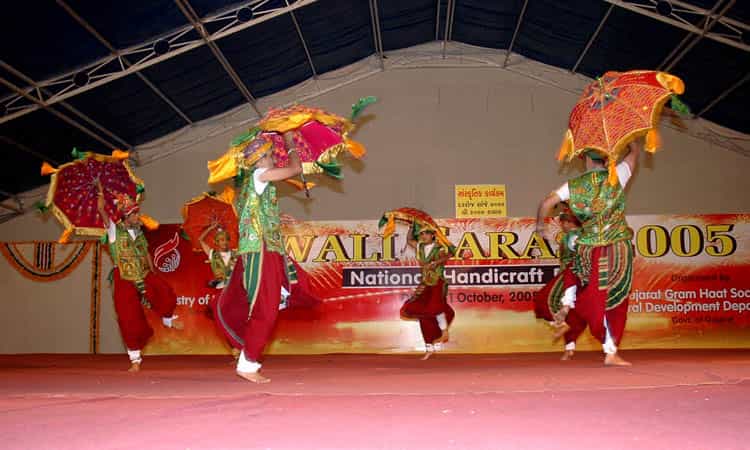
Tracing its origin back to the shepherd community of Bharwad in Gujarat, Hudo Dance was inspired by sheep fights. The local Gujarati communities depend on their livestock and cattle for livelihood so most of their festivals and internment forms are inspired by them. The steps mirror 2 sheep butting heads with each other. The dancers clap their hands in a rhythmic loud manner against the backdrop of music produced by local instruments like Dhol, Dholak, Flute, Manjira etc. Performed by both men as well as women, where by the end of the dance they are expected to select a life partner. For the community, Hudo is not just a dance but they believe that this dance is in their DNA which is passed from one generation to the next.
6. Matukadi Dance
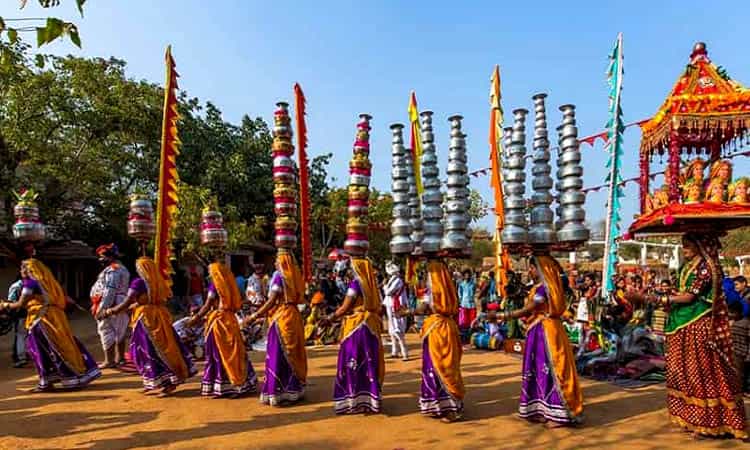
Certain Gujarati dance forms showcase the sheer strength, dedication and devotion to conserving the culture. One such dance is Matukadi whose roots can be traced back to the Rabari and Bharwad community. Traditionally performed by the women of the community, this dance is truly a testament to the core strength and balancing power of the people here. As a part of the dance steps, women can be seen rotating brass pots in between their hands while using their ring finger simultaneously to create music while also moving their feet gracefully to the music. This Gujarati dance is a treat for the eyes and is performed during special occasions.
7. Siddi Dhamal Dance
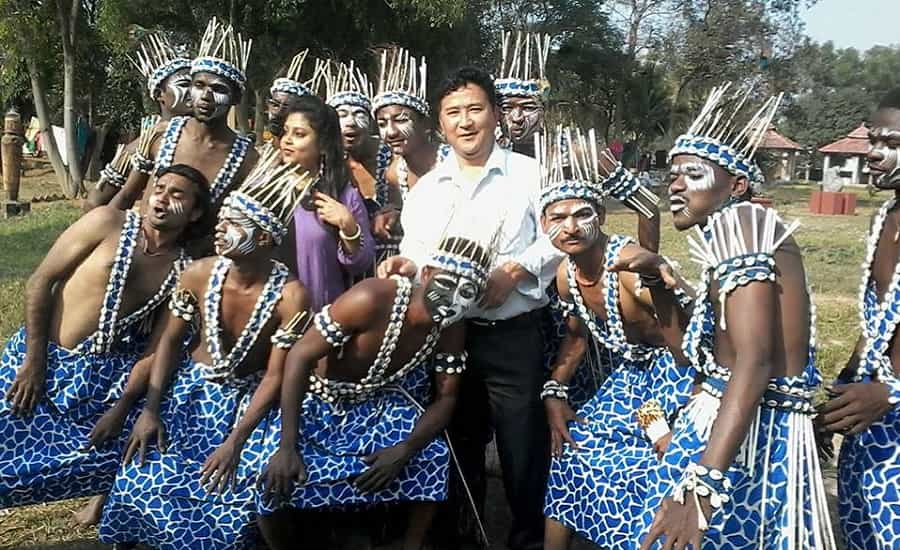
The Siddi community is one of the largest tribal communities of Gujarat whose ancestors were slaves, sailors and servants from east Africa and decided to stay back in Gujarat. Ever since they settled during the 12th century, their dance music forms are very exquisite. The dance also reflects the Siddi’s passion for hunting. Locally termed as Mashira Nritya, this dance used to take place after a successful hunt. For many years, Siddi Dhamal used to be a major source of entertainment for the reigning kings. Siddi’s have adapted to the language and way of life in Gujarat but have managed to preserve their heritage dance making it an important dance form in Gujarat. The dancers throw around coconut while displaying exquisite footwork.
8. Bhavai Dance
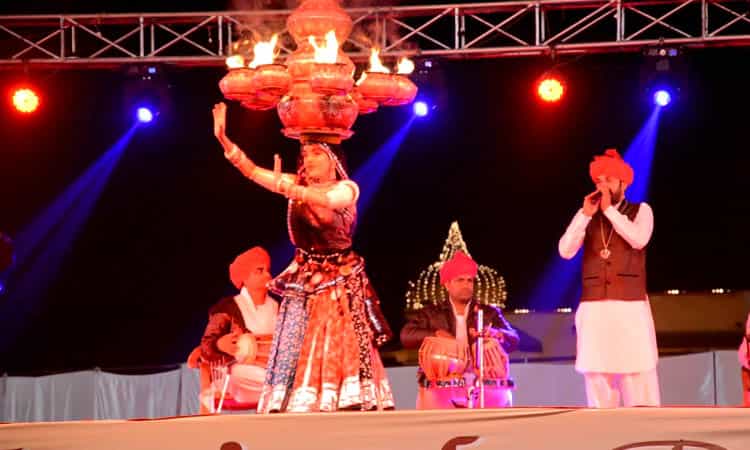
Inspired by the Bhavai Dance of Rajasthan, the Bhavai Dance of Gujarat is also a spectacle. You may have seen pictures of videos of this dance on social media as it makes you wonder. Men and women dancers balance many pots on their heads while also elegantly swaying to the traditional music. They even go as far as balancing themselves on sword’s edge or metal plate and glass bottles while also balancing the earthen pots on their head. The dance is inspired by the daily chores of the women in Gujarat who used to travel long distances in order to fetch water from a source while balancing these pots on top of each other. It gives us a glimpse into the life of a local Gujarati which is mesmerising at the same time.
9. Gop Raas Dance
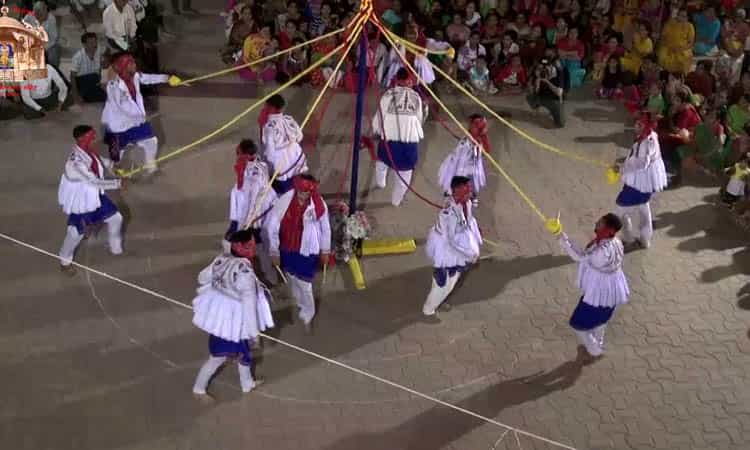
This is one of the most ancient dances in Gujarat and its word is derived from the term ‘Gopis’. The dance is performed by large and small groups of people who move gracefully, in and out of the circle in measured steps. The use of Dandiya sticks is also a major part of the dance in which the group people strike against each other. Some of this dance is done by men while some of it is done by women or groups of women. The dancers wear their best, colourful and vibrant ethnic clothes which makes the whole experience a jolly one.
10. Padhar Dance
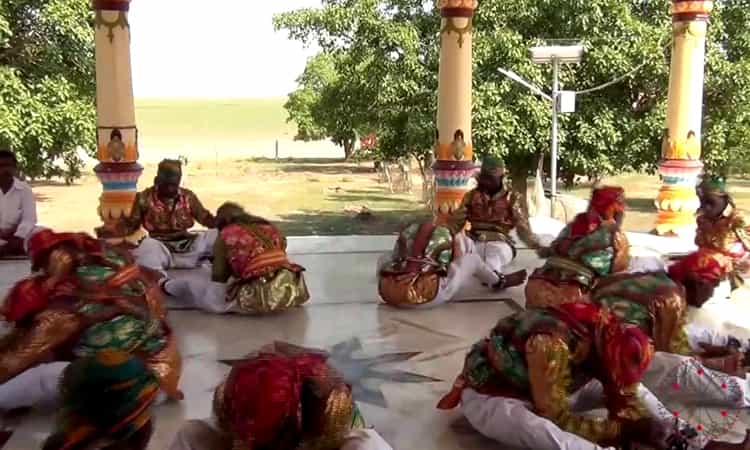
Gujarat is home to a large fishermen population that reside by the coastline and whose livelihood depends on the fish. Padhar dance is performed by the fishermen community of Gujarat who go by the same name. Living along the coastal region of the Nal Sarovar banks in the Bhal region, this dance gives its audience a look into the life and workings of local fishermen. As a part of the dance, every dance holds a stick in their hand which symbolises the oars or paddles of a boat. The dance replicates the movement of paddling oars in a boat and the dancers also hum along some traditional folk songs associated with water.
11. Mer Raas Dance
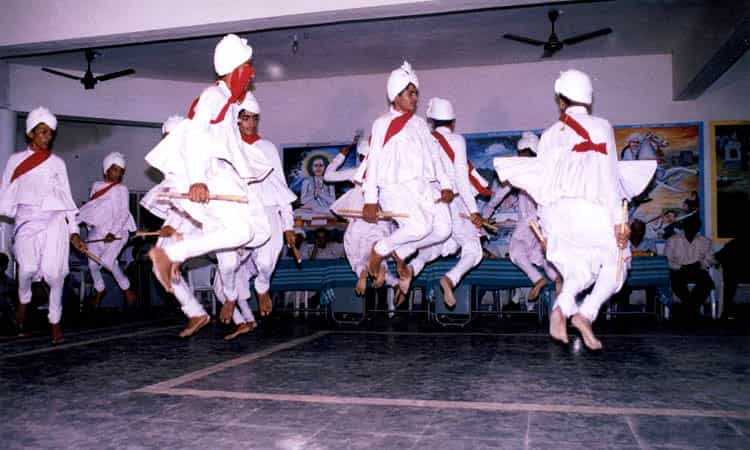
Performed by the people of the Mer community, residing in the Saurashtra region of Gujarat, this dance is also termed as Mehr or Mahr. This traditional folk dance of Gujarat is performed mainly in the Porbandar region which is an extremely picturesque destination. The dance is not only performed in steps but it is also a showcase of the powerful strength and martial valour of the men of Gujarat. It can be dubbed as a warrior dance as the steps replicate a war scene. Before the dance kickstarts, they throw red colored Gulal all over their body and clothes to express their joy and happiness. Unlike other traditional folk dance in Gujarat, Mer Raas is devoid of any background music.
Frequently Asked Questions Folk Dance of Gujarat
Q1. Which Is The Most Famous Dance Of Gujarat?
Ans. Garba and Dandiya are two of the most famous folk dances of Gujarat.
Q2. What Is Gujarat Famous For?
Ans. Gujarat is famous for its Beaches, Temple Towns, Wildlife Sanctuaries, and culture.
Q3. Which Musical Instruments Are Used In Gujarati Folk Dances?
Ans. Dholak, Jhanjhar, Harmonium, Sarangi, and Pakhawaj are some of the most famous musical instruments used during traditional Gujarati dances.
Q4. When Does The Rann Utsav Take Place?
Ans. Rann Utsav takes place every year from October to February.
Q5. When Is The Best Time To Visit Gujarat?
Ans. October to March is the best time to visit Gujarat.


 Call
Call WhatsApp
WhatsApp Enquiry
Enquiry
COMMENTS